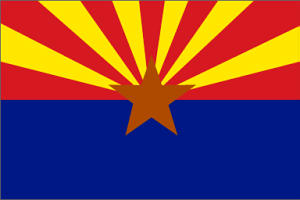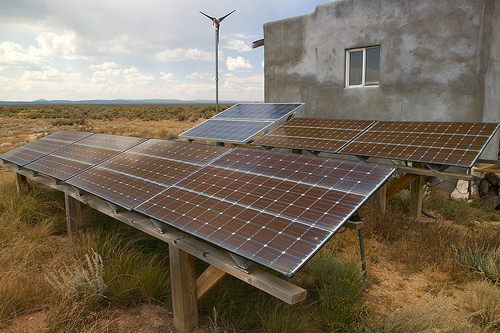Update: April 26th, 2009. I’ve had a few brief conversations with Todd over telephone and IM, and have offered to cease pursuing both judgments and remove this post from this website provided a prompt, reasonable payment schedule for the personal judgement against Todd. He has committed to proposing me a payment settlement plan by the end of April, 2009. I am currently awaiting this documentation.
There are several areas of this post in which he has taken issue. Since many people have already read this post I am hesitant to silently change copy, so for readability purposes I have highlighted that original copy in bold, followed it with additional personal commentary in square brackets, and Todd’s verbatim remarks in curly braces.
Update: November 1st, 2010. I recently had a phone conversation with Todd, who stated a payment schedule should be possible in the near future. I’ve yet to receive any follow up of meaningful action.
Update: December 1st, 2010. Very minor typographical corrections.
—-
I’ve avoided writing on this for a year and a half now, but have been pushed to do so by several inquiring minds over the past year and a half not affiliated with the company. Some documentation on this can be found in public record, and some not. I will note the points on which I’m speculating. None of this information is covered by any NDA I am under.
The company under discussion is generally known as “FonWallet”, though the official legal entity has changed numerous times and is fairly tangled in the personal affairs of one of its owners, Todd Coulter. {Todd, April 16th, 2009: “This is totally false, inaccurate and easily proven”} [Preston: April 26th, 2009: When I first became involved in the project, most important assets at the time seemed to have direct ties to Todd, personally, rather than the company: such as bank accounts, server assets, and vendor accounts. At the time, at least, there were a handful of different entities that all centered around Todd… A few I recall were FonWallet Payment Solutions, Inc., FonWallet Payment Solutions, Ltd., MBXIP, SipCellNet… possibly other I do not remember. I do NOT have detailed knowledge of the activities of those additional entities, nor do I make ANY claims as to how–if at all–they currently relate back to FonWallet. Also note that I still have the original stock certificate log books for FPS, Inc. and FPS, Ltd.] I have neither vindictive nor harmful wishes against anyone affiliated with the company: only to be compensated for my work.
I personally performed a significant amount of work for FonWallet, at the time known as FonWallet Payment Solutions, Inc. and now known as FonWallet Transactions, Inc., largely in the first half of 2007. It is a startup operated largely in Phoenix. {Todd, April 16th, 2009: “This is again totally false, inaccurate and easily proven”} [Preston: April 26th, 2009: I personally know more than a few people of current and former involvement with the project that are local to the Phoenix area. Whether or not Phoenix now represents a majority of the projects efforts, I do not know: simply that there is a significant amount of work being done in Phoenix. With regards to the entity primarily associated with the project, all current documentation I can find–including the FonWallet.com website itself–leads me to believe that “FonWallet Transactions” is now the preferred nomenclature. This could be wrong, but from the perspective of a reasonable outside observer, this definitely seems to be the case.]
Employees/Contractors of the company were initially paid as promised, however, dollars dried up around summer and most of the concurrent staff stopped received compensation. The only reason some of us stayed on as long as we did was due to a personal guarantee made by Todd Coulter to personally cover the staff debts if the company were not able. Soon thereafter I moved on. Others stayed. As far as I know, none of the compensation owed across that period has ever been paid, even though the company has been in operation under a new name. I am aware of at least 2 others people owned money by Todd Coulter, personally.
Mr. Coulter eventually became completely unresponsive to inquiries on the matter, which prompted me to file suit. (AFAIK I’m the only that did so.) Mr. Coulter did not respond to the suit. A motion for judgment was made on 12/12/2007, and ruled upon in my favor shortly thereafter.
Two suits were actually filed, with myself (Preston Lee) as the plaintiff for both. The first names FonWallet Payment Solutions, Inc. as the defendant with a ruling of $71,324.32. The second names Todd Russell Coulter personally as the defendant, with a ruling of $24,044.32. The sum total is $95,368.64. I suspect that the company name change was made, at least in part, to avoid having to pay these debts. {Todd, April 16th, 2009: “This is totally false, inaccurate and easily proven”} [Preston: April 26th, 2009: This is purely speculation on my part, and to be honest, I hope is completely wrong. I do not have insight as to the specific reasons for the creation of a new entity (FT, Inc.), except for the knowledge that the old one (FPS, Inc.) was out of money, had a ruling against it for $71K., and the stock books were were in the possession of the guy (me) who filled suit. Again, I hope I’m wrong about this, but I haven’t been provided with any reasons to believe otherwise.] To the best of my knowledge, Mr. Coulter was properly served on both accounts but neither notified the other owners of the company nor made attempt to respond to the suit.
Regardless, the latter ruling still stands, and I have tried numerous times over the past several years to settle the matter and collect compensation for the months of work and expenses that I am personally owed. I wish all those affiliated with the company the best of luck, however, this matter is certainly not “closed”. There are some interesting and challenging concepts involved and I wish the staff the best of luck. I write this note as a friendly, public attempt to settle this matter once and for all.
Relevant public legal documents are available from Maricopa County, Arizona. If anyone–specifically Todd Coulter–would like to the discuss the issue with me directly, you can reach me direct via email or my cell.
 In Spring 2011, the College of Technology and Innovation at the ASU Polytechnic campus will again be offering CST 533/494: Database-Centric Enterprise Application Development. The calendar is not yet out, but should soon be listed as a Thursday evening class: one night per week for the Spring semester. The course will be available at both undergraduate and graduate levels for 3 credit hours.
In Spring 2011, the College of Technology and Innovation at the ASU Polytechnic campus will again be offering CST 533/494: Database-Centric Enterprise Application Development. The calendar is not yet out, but should soon be listed as a Thursday evening class: one night per week for the Spring semester. The course will be available at both undergraduate and graduate levels for 3 credit hours.


